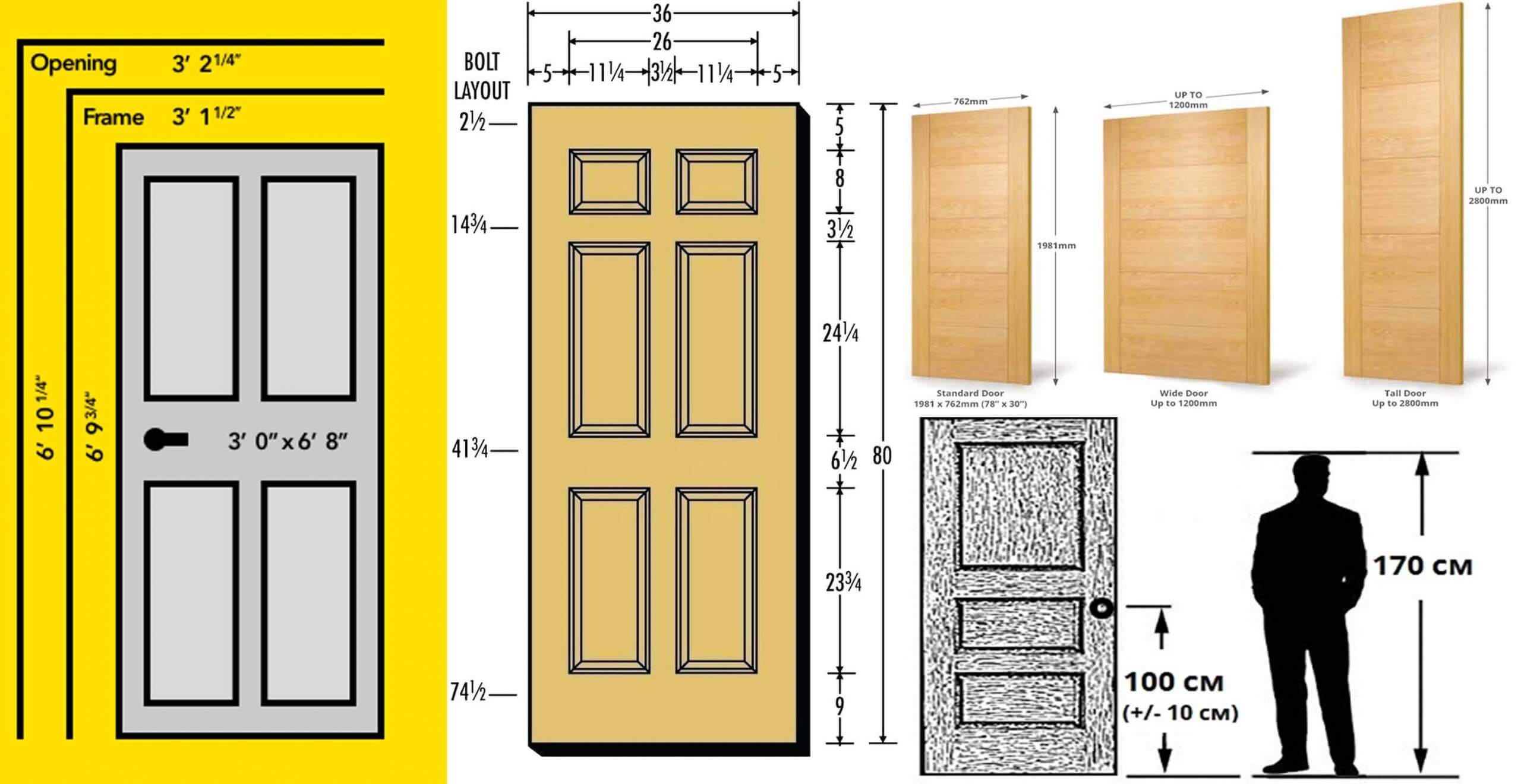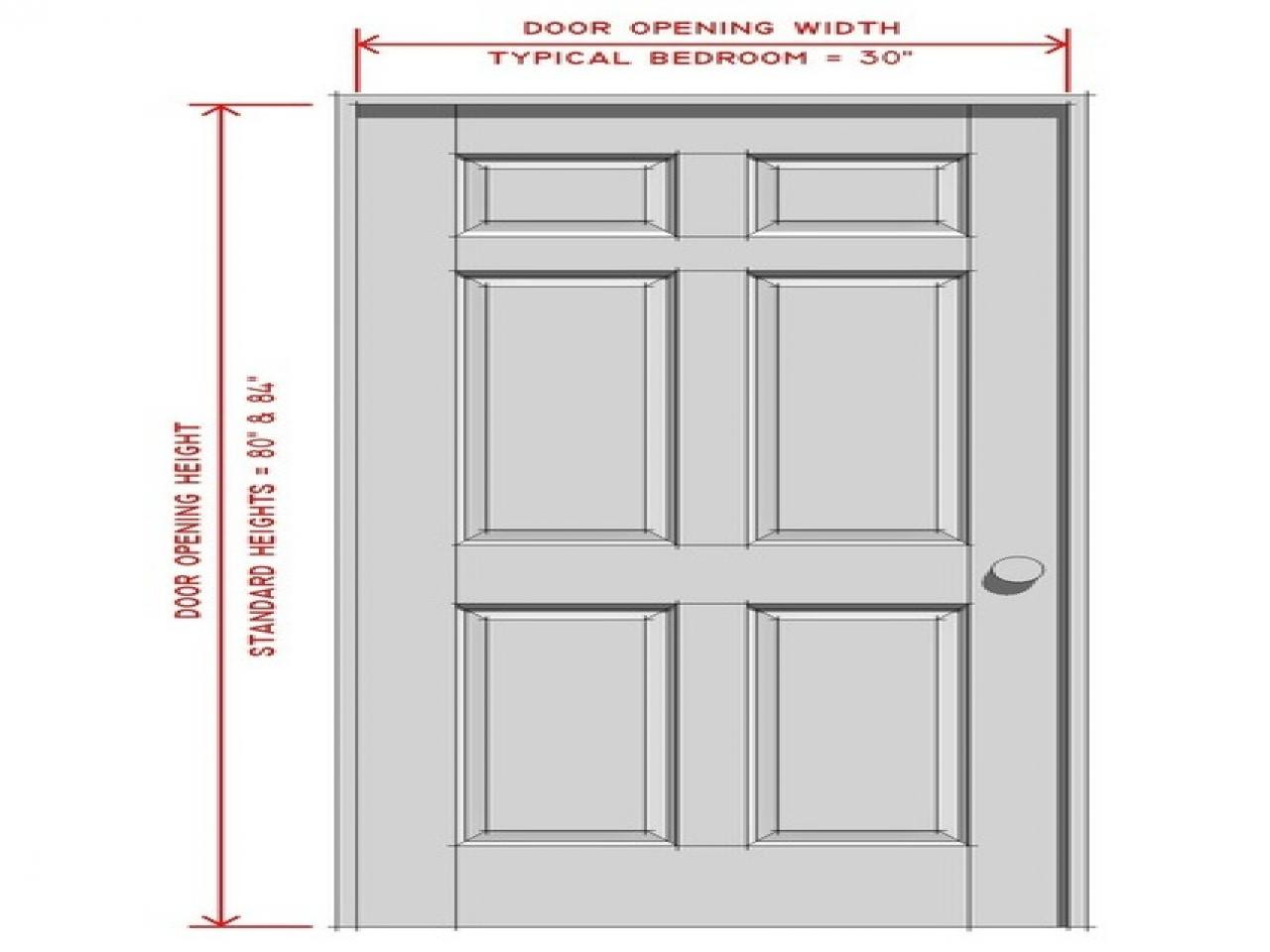Standard Bedroom Door Sizes: What Size Door For Bedroom

Choosing the right door size for your bedroom is crucial for both functionality and aesthetics. It’s important to consider the size of your room, the type of door you want, and any existing architectural constraints. This section will delve into the common bedroom door sizes, helping you make an informed decision.
Standard Bedroom Door Sizes
A standard bedroom door size is typically between 30 inches and 36 inches wide, with a height of 80 inches. However, these dimensions can vary depending on the type of door and the region.
- Single Doors: Single doors are the most common type of bedroom door. They are typically 30 inches wide and 80 inches tall. These doors are suitable for most bedrooms, especially smaller ones.
- Double Doors: Double doors are often used for larger bedrooms or when you want to create a grand entrance. They are typically 60 inches wide (30 inches per door) and 80 inches tall. Double doors can also be used to create a more spacious feel in a room.
- French Doors: French doors are similar to double doors, but they have glass panels that allow for more natural light. They are typically 60 inches wide (30 inches per door) and 80 inches tall. French doors are a popular choice for bedrooms with beautiful views or for creating a more elegant look.
Typical Bedroom Door Dimensions, What size door for bedroom
Here’s a table summarizing the typical dimensions of different bedroom door types:
| Door Type | Width | Height | Single Door | 30 inches | 80 inches | Double Door | 60 inches | 80 inches | French Door | 60 inches | 80 inches |
|---|
Standard Door Widths and Heights by Region
Standard door sizes can vary slightly depending on the region. For example, in the United States, a standard single door is 30 inches wide and 80 inches tall. However, in Europe, the standard single door width is often 32 inches.
- United States: 30 inches wide x 80 inches tall (single door)
- Europe: 32 inches wide x 80 inches tall (single door)
- Australia: 32 inches wide x 80 inches tall (single door)
It’s always a good idea to check with your local building codes to determine the specific door size requirements for your area.
Factors Influencing Bedroom Door Size

Choosing the right bedroom door size is crucial for functionality, aesthetics, and overall comfort. Several factors influence this decision, ensuring a perfect balance between space optimization and accessibility.
Furniture Placement
The placement of furniture within the bedroom significantly impacts the required door size. Consider the size and configuration of your bed, wardrobe, dresser, and other large pieces.
- For instance, if you have a king-size bed with a headboard that extends beyond the wall, a wider door is essential to ensure easy access and prevent the door from hitting the headboard.
- Similarly, if you plan to place a large wardrobe or dresser near the door, a wider door is recommended to prevent furniture from obstructing the doorway.
Choosing the Right Door for Your Bedroom

Picking the perfect door for your bedroom can be a fun and rewarding experience. It’s a chance to personalize your space and enhance its style and functionality. But with so many options available, it can be overwhelming to know where to start. This guide will walk you through the key considerations to help you choose the right door for your bedroom.
Door Materials: Exploring Your Options
The material of your bedroom door plays a significant role in its aesthetics, durability, and cost. Here’s a breakdown of the most common materials:
- Wood: A classic and timeless choice, wood doors offer natural beauty, durability, and excellent sound insulation. They come in a wide range of styles and finishes to suit any décor. However, wood doors can be expensive and require regular maintenance to prevent warping, cracking, or fading.
- Glass: Glass doors bring a modern and sleek touch to bedrooms, allowing natural light to flood the space. They are also relatively easy to clean. However, glass doors offer less privacy and may not provide adequate sound insulation. Consider frosted or textured glass options for enhanced privacy.
- Metal: Metal doors are known for their durability, fire resistance, and security. They are also low-maintenance and resistant to moisture. However, metal doors can be expensive and may not be the best choice for bedrooms seeking a warm and inviting ambiance.
Door Styles: Finding the Perfect Fit
The style of your bedroom door significantly impacts its functionality and aesthetic appeal. Consider these popular options:
- Traditional Swing Doors: The most common type, swing doors are simple, reliable, and affordable. They open inward or outward, providing a classic look for any bedroom. However, they require sufficient space for opening and closing, which might be a concern in smaller bedrooms.
- Sliding Doors: Sliding doors are perfect for maximizing space, especially in smaller bedrooms or when limited wall space is available. They slide along a track, eliminating the need for swing space. However, sliding doors can be more expensive than traditional swing doors and may not offer the same level of sound insulation.
- Pocket Doors: Similar to sliding doors, pocket doors disappear into the wall when opened, creating a seamless look and maximizing space. They are ideal for small bedrooms or areas where a traditional door would obstruct traffic flow. However, pocket doors require specialized installation and can be more expensive than other options.
Choosing the Right Door Size
The size of your bedroom door is crucial for functionality, aesthetics, and accessibility. Consider these factors:
- Bedroom Dimensions: Measure the existing door opening and the available wall space to determine the maximum size of the door you can install. Ensure the door fits comfortably without obstructing traffic flow or furniture placement.
- Personal Preferences: Consider your personal preferences for door size and style. A larger door can create a sense of spaciousness, while a smaller door can add intimacy to the bedroom. Also, factor in your needs for accessibility, such as a wider door for wheelchair users.
- Furniture Placement: Make sure the door size allows for comfortable furniture placement and movement within the bedroom. Consider the size and shape of your bed, dresser, and other furniture pieces.
What size door for bedroom – While the ideal bedroom door size depends on the room’s dimensions and personal preferences, it’s crucial to consider the overall flow of the space. A narrow door in a cramped bedroom can exacerbate feelings of claustrophobia, while a wide door in a spacious room might feel disproportionate.
Take inspiration from the golden gate south b one bedroom design, where the door’s size complements the room’s overall aesthetic and functionality. Ultimately, the right door size should enhance the bedroom’s character and create a welcoming atmosphere.
Choosing the right door size for your bedroom is crucial for both functionality and aesthetics. A standard door width of 32 inches is common, but for a larger bedroom or one with a walk-in closet, a 36-inch door might be preferable.
If you’re aiming for a romantic and modern oasis, consider incorporating the stunning color palette of a rose gold and blush pink bedroom , which can complement a variety of door styles, from classic white to bold black. Ultimately, the ideal door size for your bedroom depends on your individual needs and desired aesthetic.
